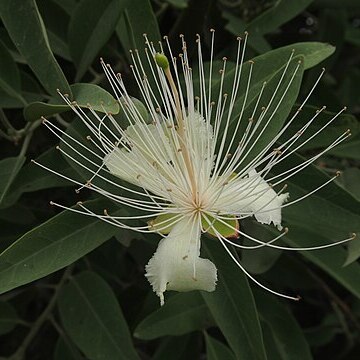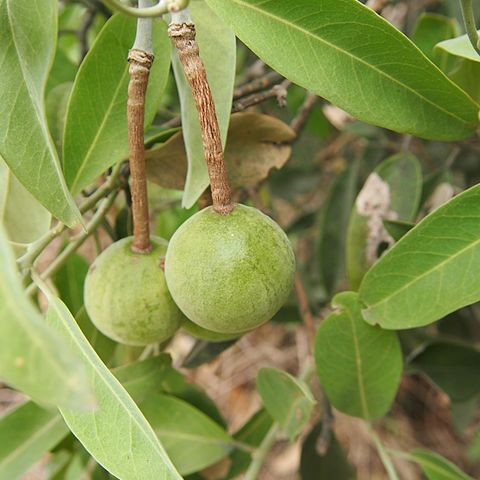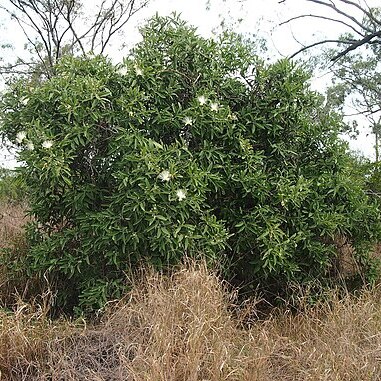Climber or twiner, sometimes shrubby, densely tomentose; trunk to 10 cm diam.; twigs slender, zig-zag. Spines recurved, 3–4 mm long, often abortive on fertile twigs. Leaves ovate to subrhombic or elongate, obtuse, rarely notched, sometimes mucronate; 2.5–9.5 cm long, 0.7–3 cm wide, glabrescent; base obtuse to rounded; midrib slightly raised above; veins 4–6 pairs, obscure; petiole 2–6 mm long. Flowers solitary or serial in rows of 2–3; pedicels 1–2.5 cm long. Sepals 6–12 mm long, 3–4 mm wide, boat-shaped, slightly unequal, tomentose. Petals 10–16 mm long, 2.5–4 mm wide, glabrous inside, white. Stamens 20–22, rarely only 10, equal to gynophore. Gynophore 1.7–3.5 cm long, glabrescent; ovary 2–2.5 mm long, glabrous; placentas 3 or 4. Fruit ellipsoidal to globular, 1.5–2 cm diam., dehiscent; pericarp thin, yellow. Seeds 3 to many; axis through attachment c. 4.5 mm long.
More
A small shrub. It grows 1-2 m tall. It scrambles over other plants. The stems are zigzag in shape. There are a pair of backward curving spines at each angle along the stem. The leaves are oblong and blunt. They are thick and leathery. They are 2-5 cm long by 1-1.5 cm wide. The flowers are white or cream and fluffy. The flowers are 1.5-2 cm across. The occur either singly or in pairs in the axils of leaves. They have a sweet smell. The fruit is an orange berry 3-4 cm long. It is oval shaped and contains many seeds. It is edible.



